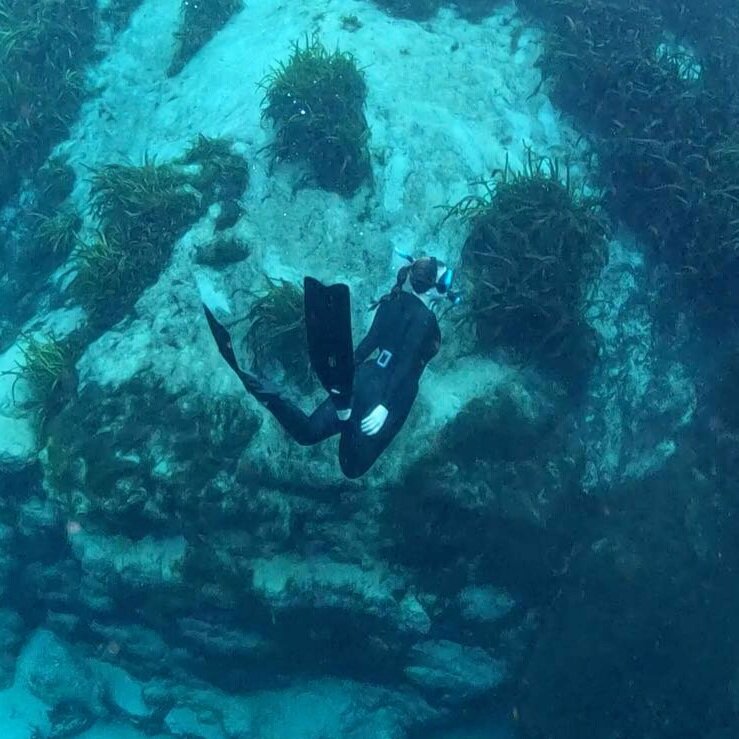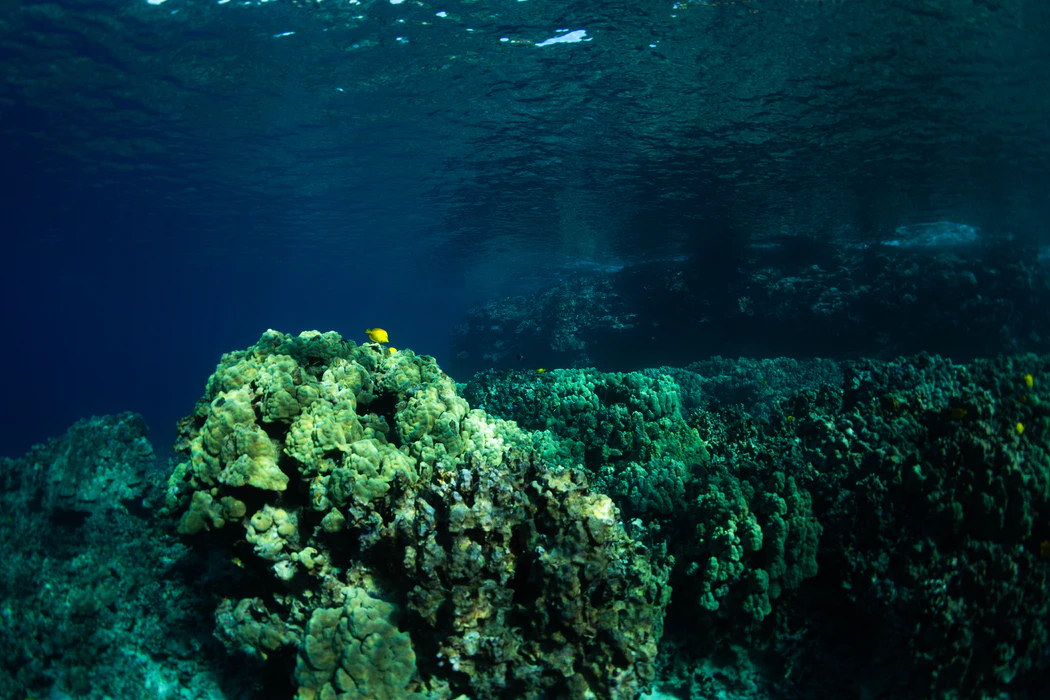The Evolving Relationship Between Cultural Knowledge and Fisheries Management
By Alison Atchia
Location: Florida, USA
Alison is a marine scientist currently pursuing a Master's in Fisheries and Aquatic Sciences from the University of Florida. She works as a Graduate Research Assistant in a marine geomatics lab, and is focusing her research on monitoring mangroves and coral reefs using satellite imagery.
As young scientists, many of us are taught about natural resource management and conservation practices from a primarily scientific perspective. As we transition from the classroom to careers in conservation, it is important to understand that this is only one side of the story. There are many people who rely on the ocean with a wide range of knowledge and skill sets. Indigenous and cultural knowledge has guided conservation practices for thousands of years. However, these practices are not often discussed in typical fisheries courses. We need to keep in mind the ways in which our Western perspective leaves us short-sighted, and work to better represent and empower local communities impacted by management decisions.
One flaw of modern fisheries management is the top-down approach it takes. Government institutions are often in charge of collecting evidence, making decisions, and implementing their decisions on the local fishing communities. This process fails to empower the resource users, and puts power in the hands of those not immediately affected by the decisions made. An article in Marine Policy by Nielsen et al. discusses this dynamic and how it alienates the small-scale fishing communities from the decision making process.
Fishers in Sri Lanka utilizing stilts to fish in the nearshore reefs.
(Photo by Daniel Klein on Unsplash. Taken at Mirissa Beach, Mirissa, Sri Lanka.)
One proposed solution to this problem is co-management. Co-management, as described by the Nielsen et al. paper, is the sharing of responsibility and co-operation between the government and fishing communities. Nielsen et al. advocates for “empowering fisheries co-management,” which weighs the fishing community’s opinions on management objectives equally to the governments, values cultural and indigenous knowledge, and assists in the implementation of these management decisions. Co-management has recently been implemented in Papahānaumokuākea Marine National Monument, located in the Northwestern Hawaiian Islands. This recently formed protected area is managed with a focus on Native Hawaiian cultural values.2
For thousands of years, native Hawaiians have relied on the ocean for food and resources. They have long known the importance of avoiding food depletion and have fostered sustainable practices based on their knowledge of marine resources and ecosystem connectivity.3 In ancient Hawaii, harvest practices were focused on reducing disruptions to the habitats supporting the species of interest, and not depleting fish stocks.2 Practices like fisheries closures and catch limits were paired with a culture of kuleana, kōkua, and mālama (responsibility, sharing, and caring).2 Knowledge about the life history strategies of fish and the ecological factors that influence fisheries has been passed down through generations of Hawaiians. These ways of knowing hold value and studying traditional Hawaiian practices can help provide us with examples of sustainable human-environment interactions.
Hawaii is home to beautiful coral reefs. These reefs provide homes to many species of reef fish, sharks, stingrays, corals, and other invertebrates.
(Photo by Sarah Lee on Unsplash. Taken in Kealakekua, Hawaii.)
Co-management was implemented within Papahānaumokuākea Marine National Monument by including representation of native Hawaiin people and their cultural knowledge. Management of Papahānaumokuākea is guided by four co-trustees, one of them being The Office of Hawaiian Affairs. This group works to preserve the interests of Native Hawaiians within the protected area. The creation of groups like the Office of Hawaiian Affairs is a step in the right direction.
Chinese fisher throwing a fishing net from a sampan boat.
(Photo by Yue Su on Unsplash. Taken in Xiao Dong Jiang, Chenzhou City, Hunan Province, China )
A recent article by Reid et al. in Fish and Fisheries describes ways an indigenous framework known as Two-Eyed Seeing, or Etuaptmumk in Mi’kmaw, could be implemented for fisheries management.4 Two-Eyed Seeing is an idea from Elder Dr. Albert Marshall which incorporates “learning to see from one eye with the strengths of Indigenous knowledges and ways of knowing, and from the other eye with the strengths of mainstream knowledges and ways of knowing, and to use both these eyes together, for the benefit of all.” Reid et al. discusses how Two-Eyed seeing can provide a path to coexistence and refutes the idea that indigenous knowledge is only useful when it can be assimilated into Western science. This point of view invites scientists to reject the knowledge hierarchy we are often taught and the illusion of certainty we latch on to within the scientific community.
In a 2017 paper by Mantyka-Pringle et al., this two-eyed seeing approach was used to co-produce and blend knowledge about ecosystem health for the Slave River and Delta region in Canada's Northwest Territories.5 This paper discussed how traditional knowledge and scientific knowledge were combined using field data, interviews, existing models, and expert judgment to assess ecosystem health. The scientific knowledge indicators (e.g. bird abundance, mercury levels, and dissolved phosphorus) suggested a moderately healthy ecosystem, while the traditional knowledge indicators (e.g. flood extent, length of ice period, and fish aesthetics) suggested that the ecosystem had declined to poor quality over time. By combining these perspectives in a model, both parties came to the conclusion that the social-ecological system had declined in health. Throughout the paper, the authors also address how difficult it is to combine traditional knowledge and scientific knowledge while there is a power imbalance in favor of the latter. They state that every attempt to bridge traditional and scientific knowledge will be unique and difficult, but it can be achieved.
““Co-production of [traditional knowledge and scientific knowledge] can also enhance capacity in rural or vulnerable communities observing resource declines, allow new ideas and tools to improve both local and scientific practices, and provide checks and balances to ensure new ideas are acceptable in terms of customary institutions and values.””
The combination of cultural knowledge and modern fisheries management must be done with nuance. It is important that we don’t view this important knowledge as material to be appropriated or exploited. A paper by Douglas Nakashima and Marie Roué explains that the integration of traditional ecological knowledge with science is often done through ‘cognitive mining,’ where we implement aspects of the culture that fit within our scientific paradigm and reject what does not.6 The paper states, “while this cognitive mining may be profitable to science, it threatens indigenous knowledge systems with dismemberment and dispossession.” This assimilation of cultural ideas is often the reality of co-management efforts, and should not be the goal of management changes.
A Bajau spear fisher in Indonesia.
(Photo by Benjamin Jones on Unsplash. Taken in Wakatobi, South East Sulawesi, Indonesia.)
When it comes to fisheries management, our opinions as scientists should not have more power than the opinions of the local fishing community. Introducing new management policies guided by co-management and indigenous practices allows us to set goals and make decisions with the input of those affected, and with respect to their knowledge and way of life. These techniques also teach us as scientists new ways of thinking and understanding the environment. We need to be mindful of the ways we incorporate cultural knowledge, and reject the exploitation of these ideas. We must empower indigenous communities and cultural ways of knowing, while continuing to question our own perspective.
References
1. Nielsen, J., Degnbol, P., Viswanathan, K., Ahmed, M., Hara, M., Abdullah, N. (2004) “Fisheries co-management- an institutional innovation? Lessons from South East Asia and Southern Africa. Marine Policy. https://www.sciencedirect.com/science/article/pii/S0308597X03000836?casa_token=3_kVZYw5xKEAAAAA:Y3jOwO7Ehf1Hh3E0dIMwYN1uNOQckHTXLIlmzKx335ZVBruMo4_jG3jc0QNlJOq-tah6v4Mezw#BIB10
2. Jokiel, P., Rodgers, K., Walsh, W., Polhemus, D., Wilhelm, T. (2010) Marine Resource Managment in the Hawaiin Archipelago: The Traditional Hawaiian System in Relation to the Western Approach. Journal of Marine Science.
https://www.hindawi.com/journals/jmb/2011/151682/
3. Kikiloi, K., Friedlander, A., Wilhelmm, T., Lewis, N., Quiocho, K. Papahānaumokuākea: Integrating Culture in the Design and Management of one of the World's Largest Marine Protected Areas. Coastal Management. https://www.researchgate.net/publication/320750400_Papahanaumokuakea_Integrating_Culture_in_the_Design_and_Management_of_one_of_the_World's_Largest_Marine_Protected_Areas
4. Reid, A., Eckert, L., Lane, J., Young, N., Hinch, S., Darimont, C., Cooke, S., Ban, N., Marshall, A. (2020) “Two-Eyed Seeing”: An Indigenous framework to transform fisheries research and management. Fish and Fisheries. https://onlinelibrary.wiley.com/doi/full/10.1111/faf.12516
5. Mantyka-Pringle, C., Jardine, T., Bradford, L., Bharadwaj, L., Kythreotis, A., Fresque-Baxter, J., Kelly, E., Somers, G., Doig, L., Jones, P., Lindenschmidt, K., & the Slave River and Delta Partnership. (2017). Bridging science and traditional knowledge to assess cumulative impacts of stressors on ecosystem health. Environment International.
https://www.researchgate.net/publication/314108222_Bridging_science_and_traditional_knowledge_to_assess_cumulative_impacts_of_stressors_on_ecosystem_health
6. Nakashima, D & Roué, D. (2002) Indigenous Knowledge, Peoples and Sustainable Practice. Encyclopedia of Global Environmental Change.
http://www.unesco.org/new/fileadmin/MULTIMEDIA/HQ/SC/pdf/sc_LINKS-art%20EGEC.pdf




